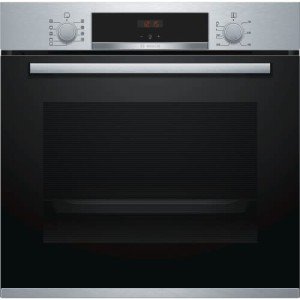built in range oven of Culinary Convenience: Integrated Ovens and Hobs
In the ever-evolving world of kitchen style, integrated ovens and hobs are at the leading edge of contemporary culinary innovation. These home appliances not just assure visual appeal however likewise enhance performance and efficiency, changing how we prepare our meals. As house owners increasingly seek to produce smooth, elegant, and easy to use cooking areas, the integration of ovens and hobs offers a perfect option. This article explores what integrated ovens and hobs are, their advantages, and key factors to consider for those looking to upgrade their kitchen area.
What Are Integrated Ovens and Hobs?
Integrated ovens and hobs are kitchen area home appliances perfectly built into the kitchen cabinetry or counters, instead of standing apart as separate entities. Integrated ovens are created to blend into cooking area units, providing a flush surface with surrounding cabinets. Similarly, integrated hobs are installed straight into the countertop, producing a structured appearance. This minimalist style technique not just elevates the aesthetic appeal of the kitchen area however likewise optimizes offered area.

Types of Integrated Ovens
Single Ovens: These standalone units are designed for simplicity and ease of use, featuring a single cooking chamber and multiple cooking modes such as baking, grilling, and roasting.
Double Ovens: Ideal for bigger households or avid cooks, double ovens offer two independent cooking compartments, enabling numerous meals to be prepared all at once at different temperature levels.
Combination Ovens: Blending standard baking and steam cooking, mix ovens offer versatility for various cooking requirements, keeping wetness while ensuring completely cooked meals.
Kinds Of Integrated Hobs
Gas Hobs: These hobs permit for precise temperature level control and instantaneous heat, making them a favorite among expert chefs and cooking enthusiasts.
Induction Hobs: Known for their efficiency and security, induction hobs use electromagnetic energy to heat pots and pans directly. They are fast to heat and cool off rapidly, minimizing the risk of burns.
Electric Hobs: Featuring smooth ceramic or glass surface areas, electric hobs are simple to clean and offer an even heat circulation for a variety of cooking designs.
Advantages of Integrated Ovens and Hobs
1. Space Optimization
With the trend of smaller sized living spaces and open-concept homes, integrated appliances help optimize kitchen area. By fitting seamlessly into kitchen cabinetry, kitchen areas can appear larger and more open, decreasing clutter and boosting visual appeal.
2. Aesthetic Appeal
Integrated ovens and hobs supply a streamlined, modern appearance that fits well within various design styles. The capability to tailor kitchen cabinetry ensures that homeowners can achieve a cohesive look that matches their design, whether modern, traditional, or something in between.
3. Enhanced Functionality
Integrated devices frequently come with advanced functions such as clever innovation, self-cleaning choices, and numerous cooking modes. These improvements not only enhance the cooking process however likewise enhance usability, making cooking a satisfying experience.
4. Safety Features
Integrated hobs, particularly induction designs, are considered safer than standard cooking surfaces. They cool off quickly, lowering the danger of burns, and frequently consist of features like child locks and automated shut-off for additional safety.
Key Considerations When Choosing Integrated Ovens and Hobs
1. Space and Layout
Before acquiring integrated devices, think about the space readily available in your kitchen. Measure the cabinetry and counter tops carefully to ensure a best fit, enabling appropriate ventilation and installation area.
2. Cooking Needs
Evaluate your cooking habits and choices. If you regularly entertain or prepare big meals, a double oven may be the very best choice. Conversely, if you're a periodic chef, a single oven might be sufficient. Likewise, choosing between gas, electric, or induction hobs will depend upon your cooking design and comfort level.
3. Energy Efficiency
With rising energy expenses and growing environmental concerns, deciding for energy-efficient devices can conserve money in the long run. Try to find items with high energy scores and functions like programmable timers and eco-modes.
4. Quality and Brand
Buying top quality appliances from trusted brands ensures resilience and efficiency. Checking out consumer reviews and looking for recommendations can help narrow down the very best alternatives tailored to your needs.
Conclusion
Integrated ovens and hobs are more than just kitchen area appliances; they represent a shift towards a more practical, trendy, and efficient method to cooking. As homeowners prioritize seamless design, benefit, and advanced features, these integrated options will unquestionably form the kitchen areas of tomorrow. Whether remodeling a kitchen or designing a new one from scratch, integrating ovens and hobs is an investment that assures to enhance both culinary experiences and the total visual of the home.
